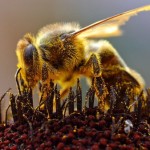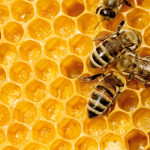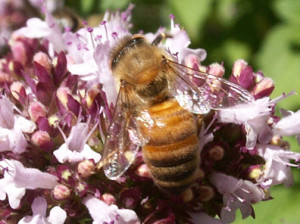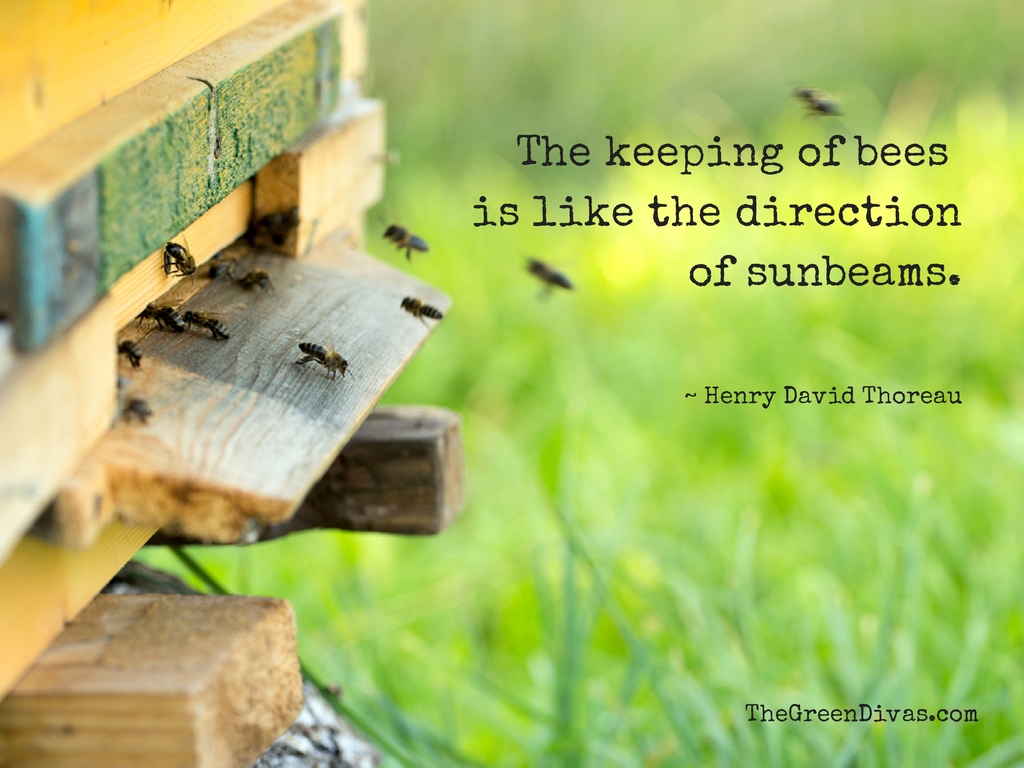Written by Maryam Heinen.
Threatened Bee Populations = Threatened Food Supply
According to a recent study, beekeepers across the United States suffered average hive losses of 23 percent this winter.
Yet the latest report from the Center for Food Safety shows the declines are more troubling than the previous report reveals, and food security is at risk.
Bees, responsible for pollinating one out of every three bites of the foods we eat, have been dying systematically for the past seven years. This is unsustainably high, threatening the bee population along with the livelihoods of beekeepers and farmers who rely on bees for pollination.
“Today’s report offers little encouragement,” says Larissa Walker, who spearheads Center for Food Safety’s pollinator campaign. “There is more to the story than just this one number—this survey is not the most statistically reliable indicator of the current state of pollinator health. People need to be informed about the threat to the food supply and armed with things they can do to bring the bees back.”
The reality is the vast majority of honeybee colonies across the country are still suffering above-average winter losses and unusually high losses in the spring and summer seasons. Year-round, beekeepers are fighting an uphill battle to keep their hives alive and viable.
A technique known as ‘splitting’ is one way beekeepers have stayed in business. A healthy hive has about 50,000 bees. Beekeepers can ‘split’ a hive into two by introducing an artificially raised queen to the new half. Presto chango: The result is two thriving, independent hives—hopefully.
“Most of the commercial beekeepers are splitting as many hives as they can build up to replace their losses, and many of the splits don’t make it. The strongest colonies may be split three or four ways,” explains Colorado beekeeper Tom Theobald who appears in from the film Vanishing of the Bees.
Keep in mind that a queen, often referred to as a ‘baby-making machine,’ lays about 2,500 eggs a day. However, this figure decreases after a year. So, to maintain productivity, many beekeepers take the queen, smash her head, and replace her with a younger, more fertile queen. (Kind of like when an older man trades in his wife for a younger bride.)
Re-queening honeybee colonies
 ‘Re-queening’ honeybee colonies is touted as one of the most important apicultural practices. Rather than allow a colony to “supersede” naturally, which is when a hive figuratively tells the older queen to step down, a beekeeper attempts to have more control over the genetic makeup of the hive by introducing a mated queen.
‘Re-queening’ honeybee colonies is touted as one of the most important apicultural practices. Rather than allow a colony to “supersede” naturally, which is when a hive figuratively tells the older queen to step down, a beekeeper attempts to have more control over the genetic makeup of the hive by introducing a mated queen.
Some would argue, however, that re-queening is unnatural and violates the sacred feminine. It’s also laborious and can be expensive. And, often, the ‘faux’ queen will fail when the hive rejects her as an artificially raised queen. Commercial beekeepers used to re-queen every two years. Now, thanks to Colony Collapse Disorder and the vicious cycle of re-queening (Read: chronically failing queens), beekeepers are re-queening every six months.
The losses reported by the Bee Informed Partnership, who issued the results with the support of the Apiary Inspectors of America and the U.S. Department of Agriculture, represent only 21 percent of the nation’s honeybee colonies, and they are potentially inflated by the recent spike in urban beekeeping, states the Center for Food Safety.
Hobby beekeepers typically do not face the same problems as commercial beekeepers. Bees in cities are doing better than those in the countryside because they are far away from commercial monocultures and systemic poisons.
“As the preliminary survey results point out, the colony mortality rate over the full 12 month period was 45.2 percent,” adds Walker.
Moreover, what isn’t recorded is that, for most commercial beekeepers, the turnover in any given season is high. For some, the figure is approaching 100 percent. So what’s the next step? Unless we see some significant changes soon, the next step is going out of business, according to Theobald, who has been suffering losses for years.
Bees dwindling in hostile environments
“We are sending the bees out into an environment that is hostile to life,” says Theobald. “The only reason we have honeybees now is because of beekeepers. The life expectancy of feral colonies is only two or three years. If we take the beekeepers out of the equation, and we are about to, it won’t be long before most of the feral colonies are gone.”
While a myriad of factors—including habitat loss, poor nutrition, pathogens and parasites—are all contributing to honeybee loss, scientists have increasingly linked poor honeybee health and pollinator losses to the indiscriminate use of a certain class of systemic insecticides called neonicotinoids. Today’s numbers underscore the need to suspend the widespread use of neonicotinoids in the United States, as has been done in Europe.
“The system in place is as bad as organized crime,” adds Theobald. “These aren’t regulators or businesspeople. They are criminals who see fit to ignore the law, distort the science, and disregard the welfare of humanity and the environment for profit, and nobody is holding them to account. Where the hell is Congress, or are they in on the game too?”
 Maryam Henein–a native Montrealer—is an investigative journalist, professional researcher, and producer of the award-winning documentary Vanishing of the Bees. She is also the Founder & CEO of HoneyColony.com.
Maryam Henein–a native Montrealer—is an investigative journalist, professional researcher, and producer of the award-winning documentary Vanishing of the Bees. She is also the Founder & CEO of HoneyColony.com.
Bonus:
Listen to this excellent Green Divas podcast featuring the beautiful Queen Bee in Training, Maryam Henein.

Pingback: Wow. The Beauty of Pollination. {Video} - myEARTH360 (the blog)